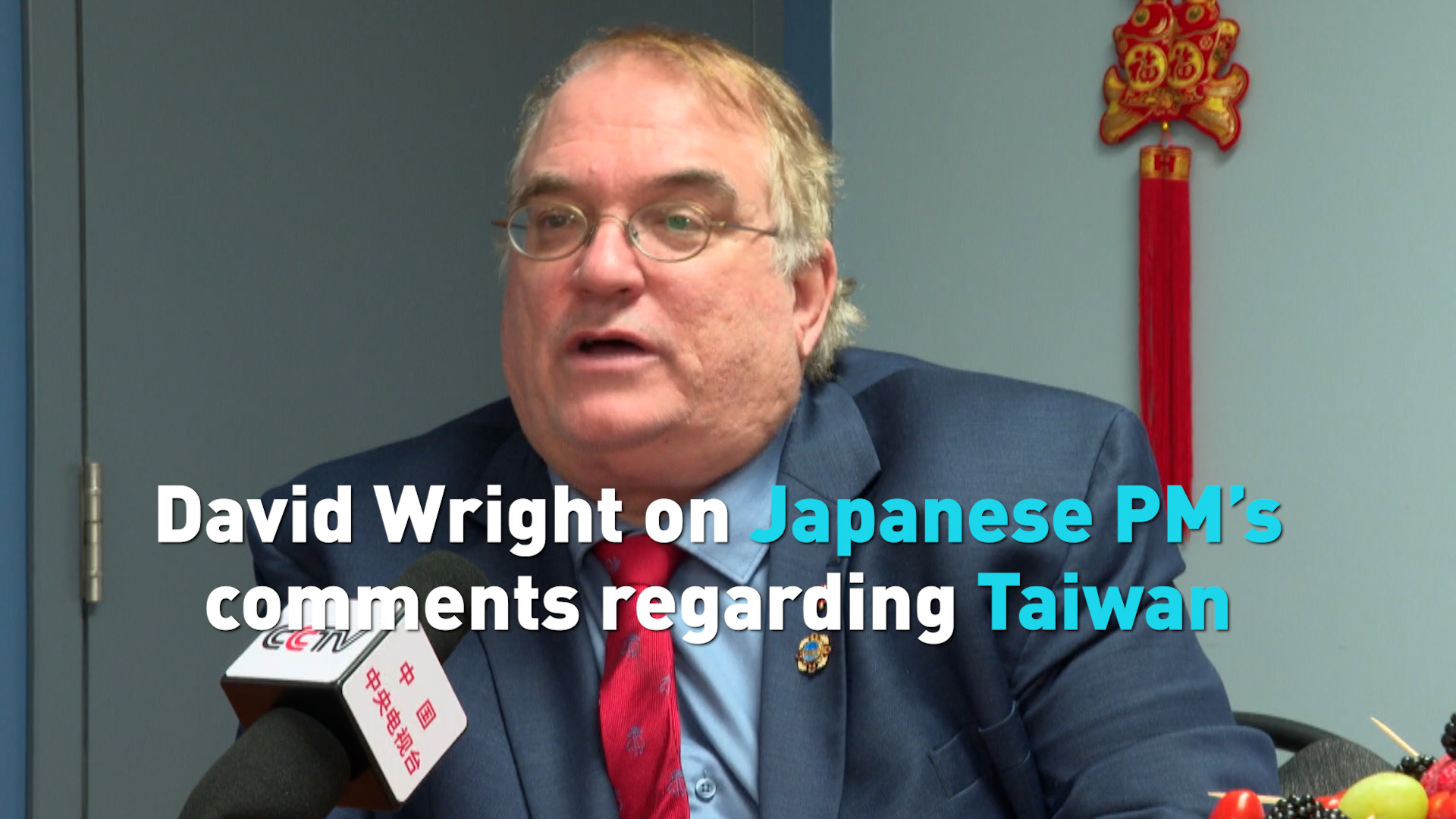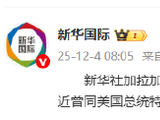Top 10 Takes on China and the World Today
U.S. Legal Decisions and Immigration Policy
From Xinhua, we see a report indicating the U.S. Supreme Court's recent decision halting the Trump administration's deportation plans for Venezuelans, citing insufficient notice. The decision echoes an earlier April ruling and critiques the government for not adhering to due process. President Trump, dissatisfied with the ruling, voices concerns over rising crime, which he attributes to the judicial block. The ruling, rooted in the historical context of the 1798 Alien Enemy Act, illustrates ongoing legal and political tensions in U.S. immigration policy. This narrative, portrayed by Xinhua, potentially highlights U.S. internal disorder to foster a perception of instability on a global scale.
Tariff Wars and Global Trade Shifts
In another insight, Michael Spence, a Nobel laureate, discusses potential economic transformations in a United Daily News article, focusing on the repercussions of U.S.-initiated tariff wars. He suggests emerging multilateral trade frameworks between China, Europe, and other major economies, which may leave the U.S. in a less dominant position. This potential shift might reinforce non-U.S. nations' economic alliances, altering the global economic landscape and potentially diminishing U.S. influence.
Spence outlines three scenarios: a regression to protectionism reminiscent of the 1930s, bifurcation of influence between the U.S. and China, or the more likely formation of viable multilateral systems excluding the U.S. Here, Spence predicts potential long-term disruption of current economic alliances and the rise of a new economic order sustained by emerging markets and established players alike.
Tech and AI Trade Concerns
The ongoing concern surrounding tech trade is highlighted in another United Daily News report. NVIDIA CEO Jensen Huang, amidst speculation about high-tech exports to China, declares no evidence supporting the AI chip transfers to Chinese markets. This comes against the backdrop of prior U.S. policy restrictions on AI tech dispersal, showcasing a delicate balance between global tech implications and national security protocols. The narrative suggests a cautious stance in tech trade policies, reflecting larger geopolitical strategies.
Huang’s confidence in adhering to regulations mirrors broader industry practices, emphasizing compliance to ensure continued access to NVIDIA’s cutting-edge technologies. His stance also criticizes restrictive movements on American technology and implies economic opportunity when U.S. innovations are allowed global permeation.
Tensions in South Asian Media and Diplomacy
Highlighting diplomatic strains, World Journal reports India’s suspension of Chinese media accounts on platforms, accusing them of propagating misinformation about India-Pakistan conflicts. This restricts the narratives flowing from Chinese state media, suspected of escalating tensions through unverified content concerning military confrontations.
This development underscores the fragility of perceptions in geopolitical conflicts and the role of media as a strategic tool in diplomatic disputes. While Beijing urges caution, India's firm action reflects its efforts to counter perceived external influence on domestic and regional issues.
Globally, these actions mirror increasing friction in South Asian geopolitics, with China and Pakistan sharing longstanding ties, potentially in conflict with Indian narratives. A cautious diplomatic environment urges regional players to balance assertiveness and restraint, impacting broader stability.
South Korea: A Political Reconciliation Shift
Xinhua reports on the resignation of former South Korean President Park Geun-hye from the National Power Party. This move, announced over social media, marks a strategic play to sway public sentiment and secure the party's victory in upcoming elections. Xinhua emphasizes Park's call for public support towards presidential candidate Kim Dae-jung, juxtaposing it with the internal party conflict about removing Park's party membership.
The article suggests a strategic realignment within South Korean politics, where Park's exit might strengthen internal support by removing controversial figures, yet risks creating division. Xinhua's lens often highlights political maneuvers in South Korea, potentially as a critique of instability versus China's own political stability narratives.
North Korea: Military Posturing and Defensive Drills
Xinhua covers North Korean air force drills, led by Kim Jong-un, focusing on enhancing defense capabilities against perceived threats. This narrative underscores the intensive training aimed at multiple defense strategies, including missile guidance and drone strikes. By emphasizing North Korea's preparedness, Xinhua may intend to cultivate an understanding of regional security dynamics while underlining North Korea's sovereignty concerns in an otherwise US-aligned region.
The drills reflect ongoing militarization, influencing geopolitical stability in East Asia, potentially prompting international diplomatic tensions. Xinhua's coverage also aligns with its consistent portrayal of North Korea's actions as responses to external threats, particularly from the United States, reinforcing a narrative of justified defensive measures.
Philippines: Political Tug-of-War and Governance Challenges
At the heart of The Paper's in-depth report is the Philippine midterm elections, a political arena animated by the Marcos and Duterte family dynamics. The recent elections challenge the prevailing power structures with the opposition gaining ground. Detailed mapping of results shows a divided senate, with the Marcos-backed New Philippine Alliance securing six seats, highlighting the competitiveness of Duterte's rival camp.
These developments echo broader concerns about political stability and the resilience of Duterte's political legacy. The coverage critically examines continued political dynasties fueled by regional allegiance and emboldened by historical narratives, which amplify legacy dynamics rather than direct governance issues. Internet platforms and social networks have become battlegrounds for influence, reflecting the evolving nature of electioneering in digital spaces.
Furthermore, The Paper juxtaposes these election dynamics against Duterte's ongoing legal battles, painting a picture of polarity within jostling political factions, where political hegemony is being vigorously contested. The insight into shifting allegiances and political trials positions the Philippines within a broader narrative of democratic turbulence in Asia.
Urban Transit Trends in Shanghai
Shanghai's urban transit system, as reported by The Paper, shows interesting dynamics of ridership patterns. Despite a marginal decline of 0.6% in overall passenger flow during the first season of 2025, certain lines like the 2, 1, and 9 lines remain highly utilized. Notably, stations such as People's Square and Hongqiao Train Station dominate passenger traffic, reflecting the city's ongoing demand for efficient transportation in densely populated areas. The increase in passenger flow at stations like the Hongqiao Airport Terminal 2 suggests improvements in airport connectivity, demonstrating a recovery from previous declines.
This analysis indicates a shift in commuter habits post-pandemic and the continuing importance of optimizing transit routes to meet urban mobility needs. Moreover, it highlights the need for strategic planning to accommodate increased activity in high-density zones, ensuring sustainability and efficiency in daily commute solutions.
Indicators of Economic Resilience and Expansion
According to an article from CCTV News, China's economy reveals robust expansion as deduced from the surge in engineering machinery sales and an uptick in public works. The data from April shows a 17.6% increase in excavator sales, with domestic demand rising by 16.4%. The intensification of infrastructure projects, particularly in northeastern regions, aligns with broader government-driven economic stabilization policies.
CCTV's portrayal underscores Beijing's commitment to sustaining economic momentum through strategic investments in infrastructure and manufacturing. This narrative not only illustrates China's efforts to balance regional economic disparities but also reflects a cautious optimism as the government navigates global economic uncertainties. As China strengthens its internal dynamics, global trade and investment partners may find renewed opportunities in this vast and evolving market.
Advancing Agricultural Productivity in Chongqing
The agricultural landscape of Chongqing, detailed by CCTV News, is experiencing transformative growth thanks to technological interventions during the 'Sanxia' critical agricultural production period. With mechanized harvesting and precision agriculture techniques, farmers have significantly increased the yield efficiency of crops like wheat and rice. For instance, recent innovations have enhanced harvesting speeds and improved overall yield quality by up to 50 times compared to manual processes.
This segment highlights China's strategic emphasis on food security and rural revitalization, demonstrating how technology can mitigate labor shortages and enhance crop resilience against climate variations. As such practices are adopted more widely, they signal a crucial shift towards sustainable and resilient agricultural systems, potentially offering models for other nations facing similar environmental and resource constraints.
Empowering Disabled Individuals in Modern China
CCTV News' report on the National Self-improvement Model Awards Conference sheds light on the recognition of disabled individuals' contributions to China's modernization efforts. President Xi's remarks emphasize the vital role of disabled citizens as integral members of society. The endorsement of figures such as hearing-impaired farmer Mei Jingtian and visually-challenged athlete Wang Yue illustrates the ongoing societal inclusivity efforts.
This narrative contrasts with past stigmatized views of disability, promoting a message of empowerment and equal opportunity. It positions disability inclusion as a cornerstone of social policy, enhancing the lived experience of people with disabilities while fostering a culture of diversity. Internationally, China's approach can inspire other nations to prioritize accessibility and inclusivity, potentially heralding an era where individuals' abilities are celebrated over their limitations.



